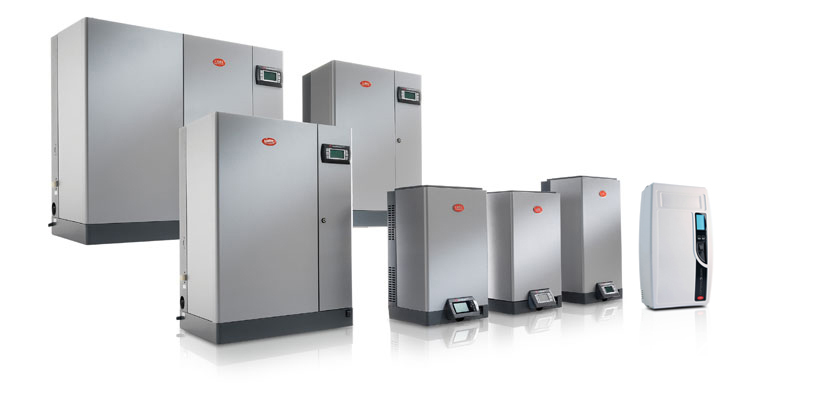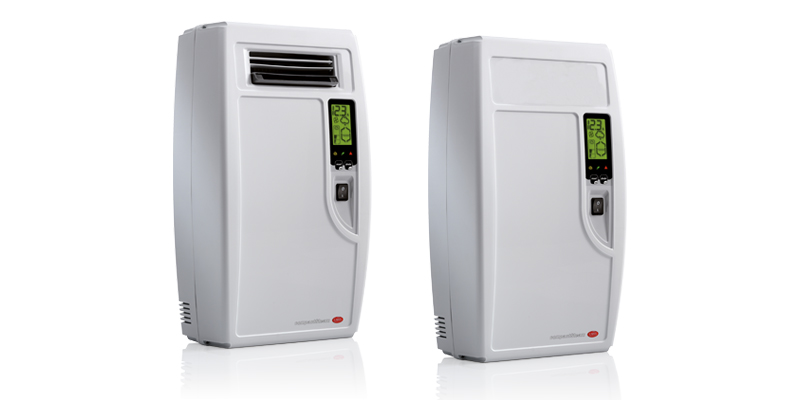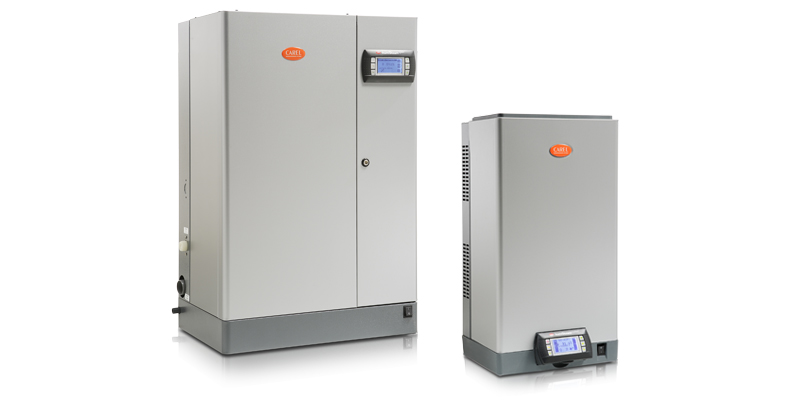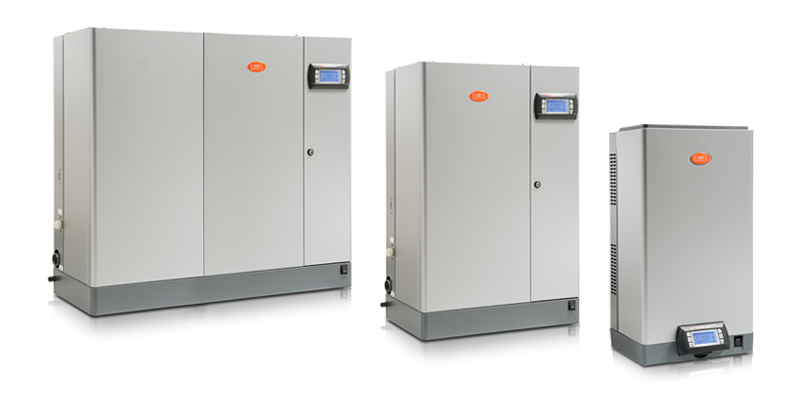Immersed electrode humidifiers NA

General characteristics
The operation of immersed electrode humidifiers is based on a very simple physical principle. As common drinking water contains a certain quantity of dissolved mineral salts, and is consequently slightly conductive, applying a voltage to metal electrodes immersed in the water creates an electric current that heats the water (Joule effect) until boiling, thus producing steam.
The quantity of steam produced is proportional to the electric current, which is in turn proportional to the water level.
Compared to electric heater or gas-fired humidifiers, immersed electrode humidifiers:
• are less expensive to purchase;
• operate with drinking water (not completely demineralized or softened);
• require periodical replacement (or cleaning) of the cylinder;
• feature modulation suitable for comfort or industrial applications, without extreme requirements.-
Plus
- AFS system (Anti Foaming System): detects foam to prevent the release of droplets together with the steam;
- works on mains water with a conductivity between 75 and 1250 µs/cm, and its control software automatically adjusts operation according to the characteristics of the water, so as to optimize operating life without maintenance.
- large cylinders galvanized electrodes and anti-scale filter at bottom for extended maintenance-free operation; openable cylinders also available;
- steam production with continuous modulation from 20% to maximum capacity (10% for models with two cylinders);
- built-in conductivity sensor and control software to optimize energy efficiency and maintenance costs, with constant performance throughout cylinder life;
- automatic water drain after 3 days of inactivity
- model "X" manages a limit probe, used to limit the maximum relative humidity at the outlet, avoiding condensate formation in the duct.




